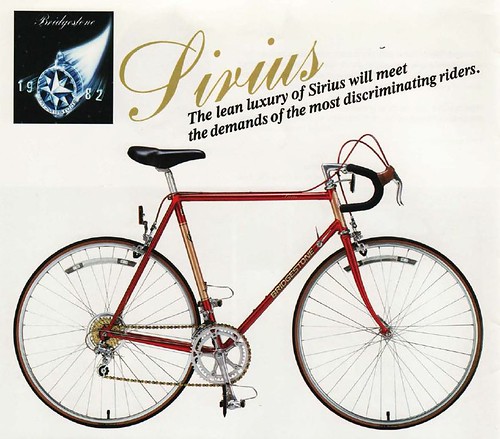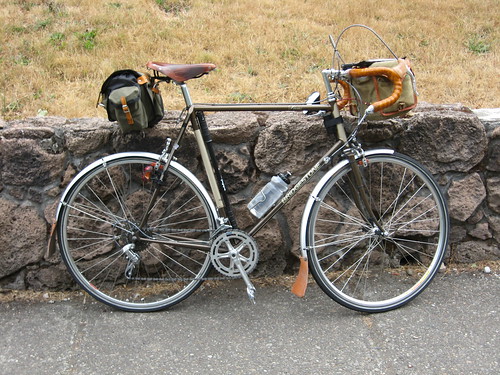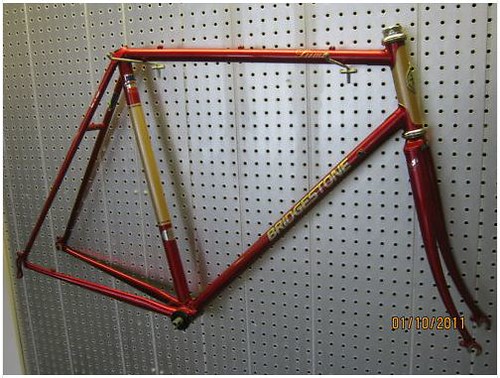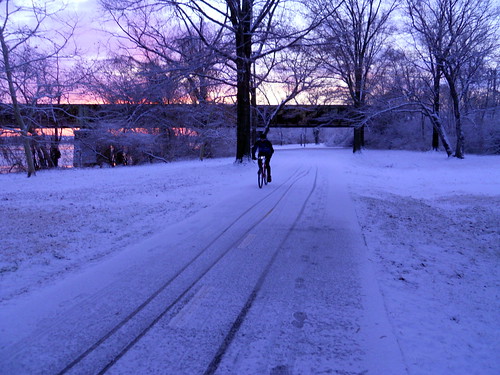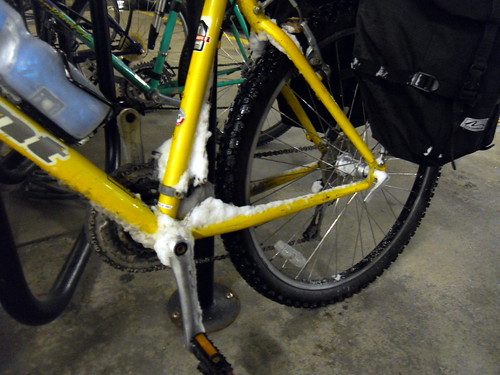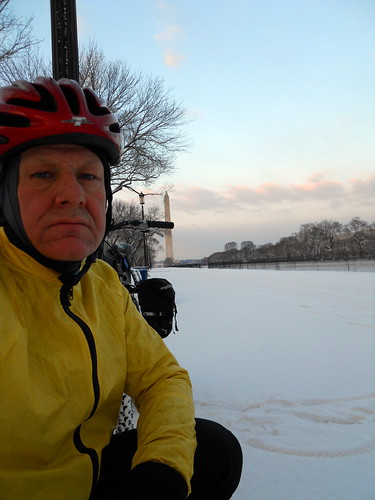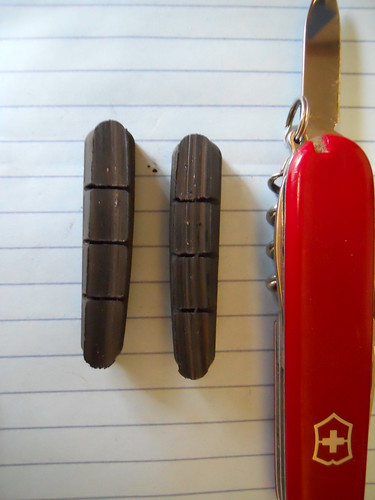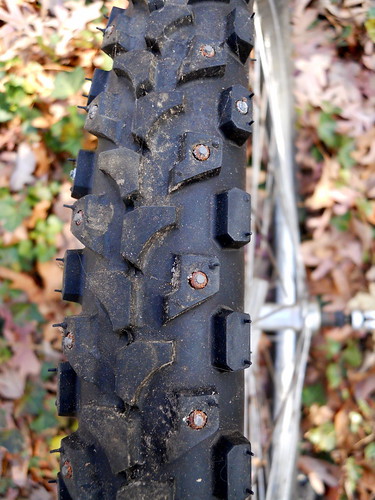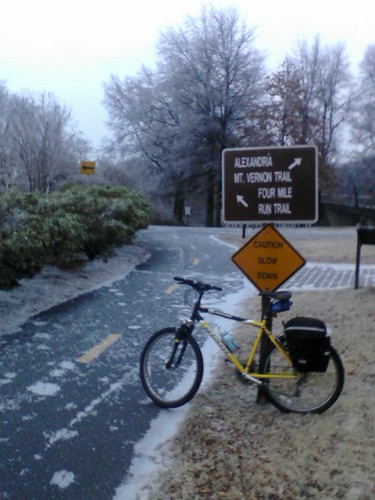
Taken this morning, on the way to work - looking south although I was heading north - I just liked the sign (note icicles) and it was a place to prop the bike for the photo. Near Route 1 around the south end of Nation Airport. Entire trail covered in ice.
Trails were covered in bumpy ice with temp hovering around freezing. As far as I am concerned, impossible conditions if you don't have studded tires (which this bike does). However I did ride along briefly with a guy who was managing without studded tires - but I was able to go quite a bit faster so I left him behind.
At the overpasses I simply walked the bike for 100 yards or so - the ice was too much on the downhill sides even with the studs.
The trick (with the studded tires) is to ride at a measured pace - no sudden braking, no quick acceleration. Gentle . . . . . easy does it. Where there is trail with grass on both sides, one can get up to 10-12 mph and ride off onto the grass if problems arise. Some of the way I simply road on the icy grass, since then falling is no longer an issue - but it is more exertion but requires less focused attention.
Wouldn't want to ride like this all the time!!
It has certain fun aspects - near Shirlington several people walking their dogs simply gawped - "if I'm falling down with my boots, how can he ride . . . a bike?" is clearly what they are thinking. Well - it's (stud) magic! Ya just gotta be careful not to push the boundaries.
